Boiling Point



By Alana Frank anfrank@my.loyno.edu
For weeks, Loyola University has been left in hot water— because they didn’t have any. What started as an equipment failure quickly escalated into a full-scale infrastructure crisis, leaving students with alternative shower options and the facilities team working around the clock to find a solution.
Due to inclement weather, the new temporary boiler that replaced the failed boiler was damaged, and the university continues to deal with no hot water. Efforts had been made by the facilities team to resolve the issue by securing a temporary boiler and finding alternatives for students living on campus.
The problem, which first occurred at the end of February and into Mardi Gras, was the result of a rupture that had occurred in the tubing of one of the two primary boilers, requiring it to be taken offline for repairs.
Kyle Gregore, the director of facilities, gave insight into the efforts of the facilities team to combat the hot water issue.
According to Gregore, an attempt had been made to activate the backup boiler, but a mechanical failure in the motor had led to it catching fire, rendering it inoperable. A specialized replacement part is required for the backup boiler, and will take approximately eight to 10 weeks to arrive. The part has been ordered and was expected to arrive in late April.
The primary boiler experienced a similar tube rupture the previous year, and gaps in preventive water treatment methods had been identified, and modifications to the system were made.
“To enhance preventive maintenance, a proactive assessment of both boilers had been scheduled by the manufacturer for March 9,” Gregore said. “Unfortunately, the primary boiler had failed before that assessment could take place.
A full-scale evaluation had been scheduled for April 1 to determine whether repair or full replacement would be the best long-term solution.”
Gregore said the biggest challenge in resolving the hot water outage had been the age of the equipment and the difficulty of acquiring new parts.
“Both boilers had been more than 20 years old, and replacement parts had no longer been commercially available,”
Gregore said. “Parts had needed to be custom-manufactured, resulting in long lead times. Additionally, repairing boiler tubes had required highly specialized work, with only two companies in the region capable of performing these repairs.”
Gregore emphasized the logistical delays that occurred when trying to secure and install a temporary rental boiler due to its size, weight, and power requirements.
“The unit had needed to be shipped in multiple pieces from different locations and had required careful placement on campus,” Gregore said.
Gregore said that after the first tube rupture occurred last year, a new water treatment program with a more advanced monitoring system had been implemented to improve maintenance and longevity.
“Loyola’s two-boiler system had been designed for redundancy, with one unit operating while the other had been offline for rest or maintenance,” Gregore
said.
The failure had occurred in the network of metal tubes that had carried superheated water across campus.
Gregore said that the repair process had been time-consuming due to the age of the equipment and damage from a recent storm to the temporary boiler.
“Over years of heating and cooling cycles, metal fatigue had developed in these tubes, leading to cracks,” Gregore said. “To repair them, the system needed to be shut down, cooled, and then have the damaged sections cut out and re-welded before being pressurized and brought back online—a process that had taken significant time.”
The assessment of the boilers had been made a key priority in Loyola’s central plant capital project. This ongoing project had included a comprehensive evaluation of critical infrastructure to prevent future disruptions.
When the facilities team tried to activate the backup boiler, a blown fuse had been discovered. Upon replacement, a fire had erupted from the motor, requiring the unit to be shut down immediately.
Due to the boiler’s age, the damaged motor needed to be completely rebuilt, which required custom manufacturing and an estimated time of eight to 10 weeks, according to Gregore.
The permanent boilers operated on a high-temperature hot water system, a closed-loop system of superheated water.
Gregore said that due to the university’s extensive hot water needs, the only available rental unit capable of meeting demand was a steam boiler, which is what replaced the failed boiler. While
different in operation, it had provided the same level of efficiency, and students had not experienced any noticeable difference in function.
A multi-pronged approach had been taken by Loyola to improve campus infrastructure.
A full assessment of all mechanical systems, including boilers, across both the Main and Broadway campuses is underway to determine repair and replacement priorities, costs, and potential energy efficiency upgrades, according to Gregore, along with consultations with the original mechanical engineer who had designed the campus’ existing boiler system to evaluate modern replacement options.
A new asset management program has been implemented to transition from a reactive maintenance model to a proactive, lifecycle-based approach. This program is expected to be fully operational by summer, according to Gregore.
Three alternative facilities—Xavier University, Tulane University, and portable shower units at Loyola—have been available for hot shower access for students in the dorms without hot water. Since the beginning of the outage, shuttle transportation has been provided by Loyola to the Xavier auditorium for access to showers in several locker rooms.
Shuttles departed from Loyola’s campus every 30 minutes throughout the day. Additionally, Tulane’s Reily Student Recreation Center showers had been made available to Loyola students from the onset. If transportation assistance is required, the Loyola University Police Department provides on-demand shuttle service.
By Eloise Pickering and Callie Honeycutt
ewpicker@my.loyno.edu
cbhoneyc@my.loyno.edu
The state of Louisiana implemented a method of execution this month that advocates describe as cruel and unusual.
Jessie Hoffman’s execution was the first carried out in Louisiana in a decade and a half, and it is the first to employ suffocation by nitrogen within the state. Hoffman was a 46-year old Louisianan native who had spent 26 years on death row.
Nitrogen gas has been used only four other times to execute a person in the United States — all in Alabama, the only other state with a protocol for the method. Hoffman was executed due to the abduction, rape, and murder of 26-year old Molly Elliot in 1996.
“Justice does not require the taking of another life,” said Sister Helen Prejean, a longtime advocate for abolishing the death penalty and author of the best-selling book “Dead Man Walking.”
In the days leading up to the unprecedented execution, opponents to the death penalty and Hoffman's supporters rallied in a last-ditch effort to change the governor's mind. The rally, held outside the Governor’s Mansion, revolved around finding peace, justice, and abstaining from the death penalty in the name of God.
At the time of the rally, Hoffman’s lawyers were working to appeal his death penalty.
The Promise of Justice Initiative hosted the event with speakers coming out to address the crowd, including members of Jessie's family and other families who have lost loved ones to violence.
August Bay, a Loyola religious studies junior and native New Orleanian, has been anti-death penalty their entire life.
“We're all God's creatures, in a way, and we have no right to play God,” said Bay, one of numerous Loyola students who attended.
Hoffman’s cousin and son both spoke at the rally. His cousin was tearful in asking for an appeal of his sentence. Hoffman’s son, Jessie Smith, said his father was a different man than how the media has portrayed him.
“My words at the rally reflected a message of compassion, the dignity of every human life, and the belief in redemption,” said Lindy Brasher, a Minister for Social Justice to men living on death row at the Louisiana State Penitentiary. Brasher spoke at the rally on Sunday.
“I stood in solidarity with those calling for an end to the death penalty and offered prayers for Jessie, his family, the victims' families, and all those impacted
ACROSS
1. Husband to Rihanna, ____ Rocky 4. On the side bar of Zoom
8. Short for California
9. Medical test that records the electrical activity of the heart
12. A ordable Care Act, abbr.
15. Opposite of young
16. Air India Express, abbr.
17. “Oh oh oh ______’s auto parts! Ow!”
19. Who’s going __ the parades this weekend?
20. Short for input
21. Follow the end of this to the pot o’gold
23. Pre x to three
24. Mr and __
25. Audio/Video, abbr.
26. Short for corporation
27. Highschool class for gym
28. Apple sells these devices
31. What the Danna center currently lacks right now
32. Branched o the IRA in 1997
33. Andorra, initials
35. Short for mathematics
36. ese videos are played in between tv broadcasts
37. Another name for a donkey
38. Sentence starter
40. Ethnic group primarily from North Africa and Western Asia
42. Pot o’____
43. Daily cycle
47. Another word for co ee shop
50. Irish stand-up comic Joanne
51. Neighborhoods often have this type of organization
52. Found in Irish pubs
55. Initials for popular cereal brand Down 53 + Down 57
56. “It doesn’t cost an ___ and a leg!”
57. Men can develop this if they drink too many beers
58. e shape a mouth can make when surprised
59. Irish dish, “Shepherds ___”
62. Research Triangle Institution, abbr.
63. “I” in German
64. Vegetable found in Irish stew
66. e hair of a lion
67. Letters for Kappa Alpha
68. Concentration
69. Use your eyes to 70. Short for gynecologist
DOWN
1. Fruit commonly found in smoothies
2. 5th century Irish bishop who has a special holiday named after him
3. Mascot for marshmallow cereal
5. Children’s game of passing a bag while music plays
6. Lululemon competitor
7. Test drive, abbr.
9. Employer of Record, abbr.
10. Irish immigrants were _______ on the ships to Ellis Island
11. Professional female entertainers in Japan
12. A small country with Adriatic and Ionian coastlines
13. Find four-leafed _______ for good luck!
14. As you wish, abbr.
18. “__-N-Out” fast food chain
22. ___ o’gold
28. is group was known for attempting to bomb Margaret atcher
29. __’ Red by Blake Shelton
30. Special air services, abbr.
34. Hockey league where the United States won 3-1 against Canada
35. Mosaic Analysis with Double Markers, abbr.
39. Ginger singer, __ Sheeran
41. ey hold your tits
42. __ Motors
44. National League, abbr.
45. “___ are all stinky from no hot water Loyola”
46. ______ martini
47. Look at Across 55
48. Largest artery in the human body
49. e Irish Potato ______ (18451852)
52. Arti cial General Intelligence, abbr.
53. Look at Across 55
54. Before Sunrise, actor __ Hawke
58. Roblox sound
59. Take a ___!
60. Texting abbr. for “I owe you”
61. Short for ensign
65. Opposite of yes

For weekly puzzle answers, download e Loyola Maroon Mobile App

Editorial Board
Editor in Chief - Matthew Richards
Managing Editor - Eloise Pickering
News Director - Violet Bucaro
Deputy Campus News Editor - Alana
Frank
Deputy Local News Editor - Mary Ella
Hastings
Worldview Editor - Ecoi Lewis
Life & Times Editor - Emma Iseman
Assistant Life & Times Editor - Isabella
Castillo
Sports Editor - Alana ompson
Opinion Editor - Callie Honeycutt
Reviews Editor - Elise Beck
Editorial Writer - Mark Michel
Copy Editor - Kloe Witt
Production
e Wolf Creative Director - Taylor
Falgout
Photo Director - Heidi Herrera-Wanke
Assistant Photo Directors - Sophia Renzi, Ava Dufrene
Chief Illustrator - Daryl Audrey Casas
Distribution Manager - Eloise Pickering, Sophia Renzi
Advertising Coordinator - Emily Keller
Digital Director - Frankie Esteves
Video Director - James Hufnagel
Video Coordinator - Christopher Nesbit
Lead Anchor - Mabel RegaladoHernandez
Social Media Coordinator - Alondra Juarbe
Content Strategist - Andrea Arroyo
Content Strategist & DEIB - Camila Faraudo
UI/UX Coordinator - Daniel Wong
Podcast Anchor - Anna Seriot
PR/Outreach Director - Julia Bueno
PR Manager - Asia Riddle
Crisis Comm Manager - Camila Torres
Contributors
Abigail Schmidt, Alyria Pierre, Anna erapondos, Ashlyn Bobb Collins, Cecilia Calderin, Christopher Pouncy, Dominique Campbell, Eleanor Boucher-Ferry, Gavin Crehan, James Wyrtzen, June Fernandez, Lily Bordelon, Alyvia Pierson, Macee Fielding, Maleigh Crespo, Mark Michel, Morgan Matteson, Myles McWilliams, Natalie Albers, Olivia Sanyal, Samantha Guillotte, Valentina Russell, Lily Haggard, Rodrigo Delgado, Janssen Van De Yacht, Alaina Coleman, Jada Mills, Sophia Santos, Natalie omas, Sky Pele, Deja Magee, Em Bay, Nicholas Gonzales, Anna Seriot, Pharrell Every, Gabrielle Stan eld
Student Media Adviser: Michael Giusti
Assistant Student Media Adviser
Gabriella Killett
CONTACT US
Main O ce - (504) 865 - 3535
Business O ce - (504) 865 - 3536
Adviser’s O ce - (504) 865 - 3295
Correspondence - maroon@loyno.edu
Letters to the Editor - letter@loyno.edu
Advertising - ads@loyno.edu
Website - www.loyolamaroon.com
Twitter - @loyola_maroon
Facebook - e Maroon
Instagram - @loyola_maroon
Our o ce is in the Communications/ Music Complex, Room 328.
Send mail to: e Maroon, Loyola University, Campus Box 64, 6363 St. Charles Ave., New Orleans, LA 70118
e Maroon is published every Friday. Unless otherwise noted, all content is copyrighted by e Maroon. All rights reserved. First copy free to students, faculty, and sta . Every additional copy is $1.00.
e Maroon is printed on 30 percent postconsumer recycled content.
Maroon March 21, 2025

Continued from front
“When it had been learned that the boiler had sustained additional damage as a result of the weekend’s inclement weather, further action had been taken,” Gregore said. “Portable shower units had been placed behind Buddig Hall for residential students on March 16. ese facilities had been fully accessible and Americans with Disabilities Act-compliant.”
According to Gregore, Loyola had already been aware that aging infrastructure required attention, but the incident demonstrated how rapidly wear and system vulnerabilities could escalate.
E orts have been accelerated by the facilities team to assess every critical sys-
tem on campus, prioritize upgrades, and prevent future disruptions.
“Loyola had already employed a two-boiler redundancy system, as well as multiple backup systems for chillers and pumps,” Gregore said. “However, the incident had been an unprecedented scenario in which both boilers had failed within hours of each other.”
e January freeze and snow, which had necessitated running both units at maximum capacity for an extended period, likely contributed to accelerated wear, according to Gregore.
Options were under review to strengthen backup heating capabilities to better withstand extreme weather events.
Gregore acknowledged the frustra-
tion on campus and reassured students that e orts had been made by the facilities team to x the issue while taking steps to ensure a more resilient and modernized infrastructure.
“We had understood how incredibly frustrating the situation had been and deeply regretted the disruption it had caused,” Gregore said. “Reliable access to hot water had been essential, and it had been recognized that the delays in restoring service had fallen short of expectations. Please know that e orts had been made tirelessly by the facilities team and university leadership to address the issue as quickly and e ectively as possible.”
By Mark Michel mamichel@my.loyno.edu
Loyola eater and Dance brings a modern interpretation of Alice in Wonderland to life with Alice By Heart in the Lower Depths theater this week.
At the heart of the play, the story is driven by a group of young people facing immeasurable challenges in an equally challenging time, Director Salvatore Mannino said.
“ is play not only presents a demanding educational experience for our students but also fosters teamwork and community building in a unique and meaningful way,” Mannino said. “ ese are the qualities we consistently seek in productions that showcase our student-artists’ talents.”
Alice By Heart adapts Lewis Carroll’s classic novel against the backdrop of the bombing of London during the Second World War.
“While not a carbon copy of Alice’s Adventures in Wonderland, Alice by Heart uses the Lewis Carroll work to escape the devastating reality of the time.”
While the space in the Lower Depths theater did initially create some problems, the cast and crew were able to adapt and ensure that their performances are as big as the messages and themes of the show, even though their stage may be small.
“First love and rst loss are universal experiences that we all encounter in our lives. While it’s impossible to cater to every audience member’s unique experience, sharing Alice and Alfred’s story authentically provides an opportunity for audiences to re ect on their own past experiences and recognize the shared similarities between the characters. Empathy, a powerful tool for artists, fosters
a sense of compassion and nurturing within our community,” Mannino said.
e intense setting of the bombing of London juxtaposed with the escape of Wonderland conveys to audiences the ideas that people have always looked for places to run to, both physical and mental, in order to handle periods of strife.
“Just as in the original Carroll work, Alice by Heart uses imagination to stretch reality and blend in seamlessly with the dream world. As acts of war are unexpected, the same is true for this play. Just as we get deep enough in our imagination, we are jolted out by forces beyond our control.”
Mannino described the design team as deserving of particular credit for creating a wonderland that truly encapsu-
lates how the characters feel,
“With no special e ects, Wonderland is created by the objects in the world coming to life just as if Alice and her friends were playing make believe in the yard. One distinctive choice we’ve made is to present this production in an alley con guration, with the audience positioned on both sides of the performance space,” Mannino said.
is setup intends to o er a unique viewing experience and illustrate the di erent aspects of the characters’ journey which will di er what is emphasized to the audience’s perspective based on where they are seated.
e composers of the production also created melodies which ring aptly throughout the production and give the
musical cohesion.
“Each song creates a speci c tone for each moment, allowing Alice to jump from chapter to chapter seamlessly as she does in the original text,” Mannino said.
e casting of the show exempli es the intense collaboration that is inherent within any stage production, but also shows the communal nature of the story, and the story’s themes.
“I believe the communal nature of this show lets the actors know that they are not alone in their experience, and always have other people to lean on in the toughest of times.”
Mannino also mentioned that there is immense joy in watching his cast and crew grow in their abilities, and

IDEAcorps MBA Consulting Challenge
Tuesday, March 25 from 6:00 p.m - 8:00 p.m | Nunemaker Auditorium
Eleven Master of Business Administration teams have spent the past several weeks developing scale-up strategies for their matched local startups, helping founders of their businesses. ey will pitch their strategies in a high-stakes nal competition for over $30,000 in
In Pursuit of Racial Justice Black Studies Panel
ursday, March 27 from 6:30 p.m - 8:00 p.m | Bobet 221
Loyola students, faculty and Mississippi community leaders explore the justice for civil rights murders and Klan cold cases in Mississippi and Louisiana. Sponsored by the Black Studies Minor and Department of History Loyola University of New Orleans.
Orleans Entrepreneurship Week
ursday, March 27 and Friday, March 28
Loyola will be featured at the event, as the Center for Entrepreneurship and Community Development is co-producing NOEW. Students can look for programming oriented towards them. Events for the day include the IDEApitch Competition and My Black CountrySongs and Stories.
Friday, March 28 from 10: 00 a.m - 4:00 p.m | Monroe Library 1st
All majors and years are invited to attend this spring job fair to meet employers from a wide range of industries. ey will be able to explore job and internship opportunities, network with professionals and innovators.
nds something new from them to be proud of every day.
e department hopes that even though it still takes place against the backdrop of past events, that audiences of all ages will understand how people, both then and now, dealt with the issues of the times in which they lived.
“Human nature is cyclical, and we believe that a play like this o ers audiences a unique chance to re ect on the past and anticipate the future.”
Mannino detailed that he believes that seeing this production will inspire and invigorate the audience, not only in relation to a newfound or rekindled passion for theater, but also a new perspective on what it means to live through hard times.
“I hope a play like this will allow younger audiences to see that theater can challenge and entertain them simultaneously. I hope audiences walk out of the theater not only moved, but open to dialogue prompted by the production.”
TAD’s production of Alice by Heart is intended to strike a chord with today’s younger generation living through such turbulent times.
“Alice by Heart shares striking parallels with the chaotic nature of our current world. Ultimately, ordinary individuals are left to grapple with the severe repercussions of others’ choices. Just as we face challenges today, the characters in Alice by Heart grapple with maintaining order amidst the darkest of times. ey nd solace and strength in each other’s presence, striving to create a better community.”
Alice by Heart from Loyola’s TAD department will be running in the Lower Depths experimental theater from March 20 to March 29.
Unraveling Polarization Peace Conference
Wednesday March 26 - Saturday March 29
ere will be a series of of events happening during the Peace Conference week to dicuss polarization withn di erent ethnic groups. Polarization is understood to be a prominent division or conict that forms between major groups in a society.
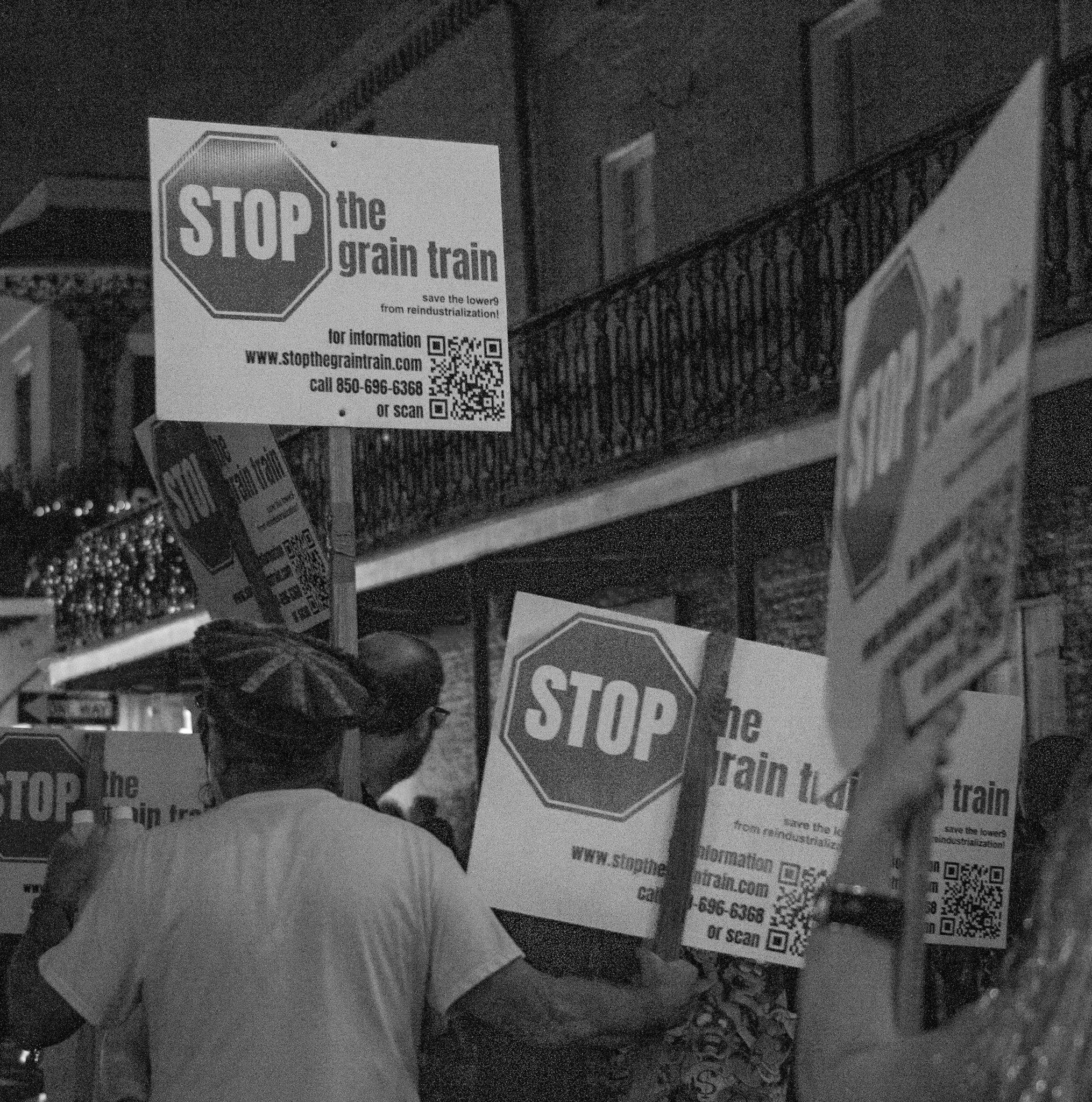
By Pablo Pineiro ppineiro@my.loyno.edu
A proposed grain terminal has pitted neighbors against developers.
An agreement between Canadian food company Sunrise Foods International and Port of New Orleans will allow the company to lease the Alabo Street Wharf in the Lower 9th Ward. e deal would also allow the grain company to expand the wharf and rehabilitate two miles of formerly abandoned rail lines to move the imported grains from the port.
In an e ort to oppose the deal, the New Orleans City Council held a vote on an amendment to the city’s Future Land Use Map, which would change a section adjacent to the Wharf from industrial to residential. e vote passed 6-0.
According to Je rey Wittenbrink, a board member of the Holy Cross Neighborhood Association, the amendment would not prohibit the project from further expanding, but it does make expansion less likely.
"We want them to see us as a neighborhood and not as a place for further industrial expansion," he said.
Neighbors said they only learned about the agreement between the port and Sunrise to build the facility in a September town hall meeting.
During a town hall meeting in December, company o cials addressed questions about the agreement. It became clear that the community did not approve of the deal. More than 100 residents attended the meeting and expressed concerns about the e ects they thought the project would have on their neighborhood.
As a consequence of these concerns, the website stopthegraintrain.com was created, which voices the residents' concerns with the project and creates a resistance against the project.
One of their concerns is the e ects of grain dust, which residents worry would both pose environmental and health
hazards on the community. Another concern is the e ects of a disrupting train through the neighborhood, which neighbors worry could lower their home values and pose a danger to children and pedestrians.
“ e problems facing the Lower 9th Ward due to the proposed grain terminal are undeniable and escalating,” said Wittenbrink, who is also part of the Stop the Grain movement.
Wittenbrink said he feels the port's outreach verges on the realm of misinformation, and he worries that the grain company and Port NOLA are concealing the true economic consequences of the project.
“ ey're playing a dangerous game of smoke and mirrors,” he said. “By isolating each phase and impact, the Port is attempting to minimize public concern.”
In an e ort to gain some public support, Sunrise Foods International launched a website called SunriseNOLA. com, that shows the results of air quality assessments and addresses questions about the project and the measures they say they have taken to mitigate the impacts on air quality.
"It is important to remember that the air quality assessment in their website does not include phase 2 and phase 3 of the project... It is cherry-picked data,” said Wittenbrink.
Phase two would add vegetable oil re ning to the project and phase three would involve “open wharf expansion,” according to Wittenbrink.
Council member Helena Moreno was at the city council meeting and shared this statement on Instagram following the vote.
“In the Lower 9, I continue to voice concerns about the future of the Alabo Wharf and stand with neighbors in working to protect their quality of life,” said Moreno.
Sunrise Foods could not be reached for comment.
By Maleigh Crespo macrespo@my.loyno.edu
Chemical industry company Air Products plans to open a clean energy complex in Ascension Parish on the property of the Orange Grove Plantation, which endangers the burial sites of nearly 300 enslaved people.
RISE St. James, a local environmental group, is working to obtain a historical marker for the site, which will recognize it as a historically signi cant landmark, giving it o cial designations and legal protections.
In 2023, it was reported that Air Products found no evidence of burial grounds on their site beyond “scattered stones with illegible letters and numbers inscribed,” which were not determined to be graves, according to state archaeologist Charles McGimsey.
Student researcher and advocacy partner of RISE St. James Stephanie Oblena believes it’s not an issue of unawareness, but that economic gain is more important to state o cials than history.
She said there is currently no federal or Louisiana law that explicitly protects burial grounds of enslaved people. While there were attempts made within the African American Burial Grounds
Preservation Program, the bill was reduced to a grants program without authorizing an entity to identify, interpret, or preserve vulnerable sites and history.
Subsequently, Air Products has no legal obligation to reconsider the complex.
e global hydrogen supplier plans to reduce greenhouse gas emissions to net-zero by 2050 through clean hydrogen projects and production.
According to Jim Schott, Loyola professor and electric utility and environmental professional, in order to achieve net-zero carbon emissions, the world has to move away from fossil fuels, like natural gas, petroleum, coal, and oil, which requires a transition to new energy sources, such as solar, wind, nuclear, and hydrogen – the linchpin of Air Products.
When hydrogen is combusted as a fuel, it has zero carbon emissions; however, hydrogen must be manufactured by re ning natural gas. With today’s technology, the process of re ning natural gas to create hydrogen creates enormous amounts of carbon dioxide, the primary greenhouse gas, according to Schott.
Air Products plans to eliminate this issue by manufacturing blue hydrogen, which calls for a similar process of re ning natural gas. Instead of releasing CO2
into the air, it will be injected into underground geological structures, where it is sequestered forever.
According to Air Products, the project will sequester 5 million tons of CO2 per year.
While Air Products’ primary goal in producing blue hydrogen is to improve the sustainability performance in the Gulf Coast region, Oblena believes the facility will create “a reframed version of what we already see in Cancer Alley.”
Cancer Alley refers to the 85-mile stretch of communities between New Orleans and Baton Rouge, where communities live alongside nearly 200 fossil fuel and petrochemical plants that have caused devastating e ects to the environment and a considerable increase in cancer, upper respiratory diseases, and other health risks for residents of the area.
Air Products would produce blue hydrogen at this Clean Energy Center and inject through their existing pipeline network that stretches from Galveston to New Orleans feeding into the southeast Texas hydrogen hub for use in energy and fertilizer markets, Schott said.
However, Oblena believes this will pose many risks to the community.
“Supposedly, this would be the largest and the rst in Louisiana, which sounds
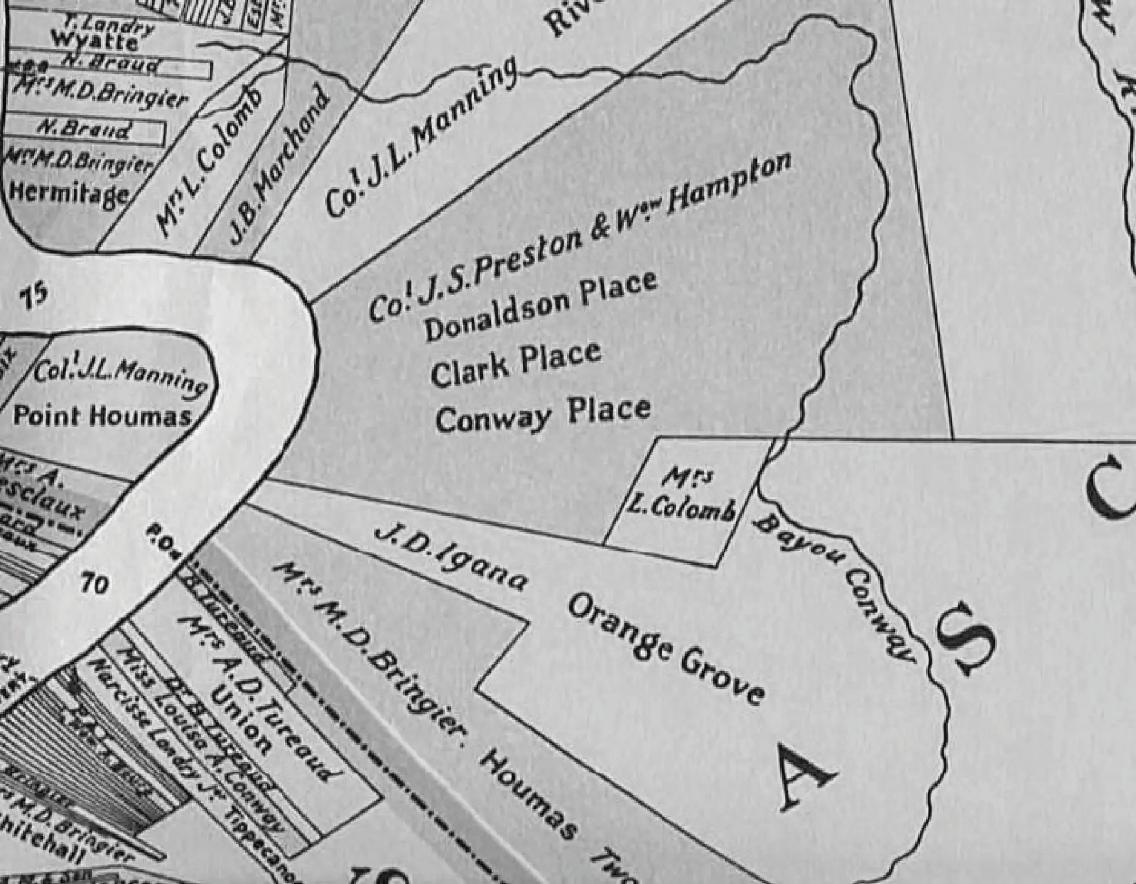
almost like a test run with Louisiana being an ideal site,” Oblena said. “ e biggest risks are the amounts of highly concentrated toxic gases that will be handled in the complex, like methane. Regardless of where things are stored, leaks happen, and all of these substances impair human health.”
Oblena said a major concern of the project is the proximity to Sorrento Elementary School, which would be within two miles of the facility.

By Alyvia Pierson atpierso@my.loyno.edu
Freshmen Mason Cummins and Nicolas Ferdinand are members of the Tulane Navy ROTC on full scholarships. Cummins, an entrepreneurship major from St. Louis, chose Loyola due to its proximity to Tulane, so he could pursue his ROTC duties there. He hopes to use his major to start up a business that’ll help third world countries. Ferdinand, an environmental science major from New Orleans, chose Loyola for its diversity and its environmental science program. He recognizes the state of the world and wants to be a part of the change to make the Earth a healthier place. He’s considering a future in environmental law.
Both Cummins’ and Ferdinand’s fathers played football for Tulane, which fueled their choice to join.
“ Ever since I was young, I've always wanted to join the military."
Mason Cummins, Entrepreneurship Freshman
“Ever since I was young, I've always wanted to join the military,” Cummins said. “I was always interested in what the military has to offer. My dad, even though he wasn't in the military, was very militaristic in the way he thought and raised me.”
It was either sports or military for Cummins, a requirement made by his father. He realized he’d have a better future pursuing ROTC, specifically the Marines. Cummins said his football and wrestling background prepared him for
the rigorous training and responsibilities that came with being a Marine option in ROTC.
Ferdinand, on the other hand, grew up with military influence. His parents are officers in the Marines, and he attended New Orleans Military & Maritime Academy, a Marine Corps based high school, before joining ROTC.
To receive a full scholarship from the Navy, Cummins and Ferdinand had to demonstrate their physical fitness, mental toughness, leadership skills, and a dedication to the unit, a feat that came natural for both. Despite not having any prior ROTC experience, Cummins’ discipline from the way he was raised allowed him to rise to the challenge. Ferdinand was previously exposed to a marine-like atmosphere from high school, making his transition from high school to college ROTC nearly seamless.
“[ROTC] is not an aggressive environment or anything tense,” Ferdinand said. “We have different sergeants and officers who play good and bad cops. Some are easier to talk to while others are aggressive. It’s chill as long as you show respect.”
On Tuesdays and Thursdays, Cummins and Ferdinand wake up between four and five in the morning to do physical training which consists of buddy carries, long-distance runs, and more. Physical training exercises are based on the results of their physical fitness tests and combat fitness tests. After training, they attend classes about the history of the Navy and Marines. On Wednesdays, they attend Leadership Lab, a briefing and fundamentals class.
“ROTC usually requires a lot of my time in the morning and the rest of the day I’ll focus on school,” Cummins said.
“Most of the time, my two schedules don’t overlap. If I do have a lot to do for ROTC, I make sure I get it done before my homework, since it doesn't take a lot

of time to complete.”
Ferdinand emphasized the importance of having a balanced schedule.
“Balancing school and ROTC definitely requires a good sleep schedule and finishing stuff as soon as you get it,” Ferdinand said. “For example, if someone is tasked to do something in the unit, pass the word down or do it as soon as you can.”
As Marine options, Cummins and Ferdinand are in the Navy ROTC until their junior year. Once they become juniors, they’ll officially be a part of the Marine Corps as officers. Their biggest responsibility with their Navy scholarship is to continue with the Marines for at least four years after graduation. After their mandatory four years, Cummins and Ferdinand can decide whether to continue with the military or go another route, like pursuing their majors.
“I enjoy all things Marines, like hiking, shooting, and going out into the field,” Cummins said. “I also enjoy learning about military history, and how I can better support the military and the community as a leader.”
Ferdinand appreciates the structure that ROTC provides him with during college.
“Everyone is given a role to prove themselves and to show that they can lead when given responsibility,” Ferdinand said. “I like the competitive nature of it all.”
Both Cummins and Ferdinand praise ROTC for its impact on them and recommend it for those in search of something greater.
Cummins highlights the impact ROTC has had on his life.
“ROTC is going to challenge you,” Cummins said. “If you're looking for a purpose, this is the easiest way to get a purpose. It’s the easiest way to pay for college, if you're struggling. This will only help you. It motivates me to be better




By Lily Bordelon lmbordel@my.loyno.edu
President Xavier Cole released a newsletter announcing omas A. Chambers as Loyola’s new provost and senior vice president of academic a airs, who will begin the role in June.
In Cole’s newsletter, he expressed his optimism towards having Chambers as provost.
“Chambers is an outstanding administrator and an impressive scholar, and I am very pleased to welcome him to Loyola, where his experience and passion for Jesuit higher education will continue to elevate our academic programs and commitment to holistic student development,” Cole said.
Chambers accumulated more than 20 years of experience as the dean of the College of Arts & Sciences at Canisius since 2019 and multiple positions in Niagara University, including depart-
ment chair, associate vice president of academic a airs, program director for the MS in interdisciplinary studies, according to Interim Provost and Senior Vice President of Academic A airs, Maria Calzada.
However, Calzada believed that out of all of his experiences, serving as the dean of the College of Arts & Sciences is the most important when relating to his contribution as provost of Loyola.
Calzada acknowledged Chambers’ commitment to scholarship and program development for both undergraduates and graduates at Niagara and Canisius proves his understanding towards the importance of scholarships and academic developments for students at Loyola.
“I believe he is well positioned to contribute to our community in developing scholarship, teaching and transformative opportunities at Loyola New Orleans,” Calzada said.
Chambers stood out speci cally
because of his vast understanding in Loyola’s Jesuit Catholic mission of education while also implementing the importance of analyzing data regarding student success.
“He had speci c examples of how he has accomplished this in his previous roles, so we have great evidence for what he will be able to accomplish at Loyola,” Calzada said. “I believe that faculty, sta , and students are ready to welcome our next permanent provost and are ready for fresh and innovative leadership.”
By Valentina Russell varussel@my.loyno.edu
e university released its spring statistics on enrollment and retention rates late last month. ese numbers help the university, academic advisors, and faculty understand what incoming students need to succeed, as well as how to increase enrollment in the fall.
Elizabeth Rainey, assistant provost for student success, provided insight on behalf of the university about what these statistics mean for future outreach at Loyola.
e O ce for Institutional Research is responsible for collecting and reporting the data Loyola gathers each semester. e Fact Book, which is available on the university’s website, is open to the public for those interested in student enrollment numbers each semester, as well as retention rates.
According to the spring statistics released Feb. 28, 86.2% of full-time undergraduates and 92.4% of part-time undergraduates returned for the fall 2025 semester.
Of the 2,832 full-time students, 208 degree-seeking undergraduates did not return, along with 42 of the 573 full-time freshmen who began in fall 2024.
“ at’s a combination of the rst-time fall class, which was smaller than in years prior, so that was part of the drop,” Rainey said. “ ere are always some students who don’t return from fall to spring semester.”
e statistics for this school year were a ected by the lower number of rsttime, full-time undergraduate students. Because the incoming class was already smaller, the rest of the statistics also showed a decline, according to Rainey.
“We see a lot of students, a lot of undergrads, that exit interview data where we ask students, ‘What’s driving you to leave?’ It’s often very personal,” Rainey

said. Rainey said students may transfer to another university for academic reasons, nancial hardships, or because they have already graduated. Some transfer
in search of a program that Loyola does not o er, while others switch to the university’s online program instead of continuing as in-person students. is spring, 143 of the 194 online de-
gree-seeking undergraduate students returned to the online-only program.
“We retained 92% of the rst-year students who enrolled this fall into the spring,” Rainey said.
Rainey also noted that the delayed rollout of the Free Application for Federal Aid impacted enrollment.
“I do think that a ected incoming students last year because there were just a lot of unknown variables,” Rainey said.
“Nobody would sign up for a private institution without knowing how much it costs. I wouldn’t advise anyone to do that.”
Rainey and Anthony Jones, the vice president of enrollment management, are working together on a strategic enrollment plan for the future.
Rainey said this plan focuses on ensuring students have the necessary support each semester to graduate.
To encourage higher enrollment, Rainey and Jones have revived in-person initiatives that allow potential students to experience Loyola rsthand and understand what to expect as a student.
“We don’t want to surprise you,” Rainey said. “It’s going to be hot, sometimes things go a little wonky, but overall it’s a lovely place.”
e Student Success Center is now open on select Saturdays this spring and will host Sneak Peek events in the summer to engage with both current and prospective students, Rainey said.
“ is fall, we partnered with two di erent high schools to do scavenger events around the library,” Rainey said. “We engaged with the library and its services, just sort of a fun day and something that is di erent from a campus tour to give students exposure.”
Rainey also mentioned the National Association for Student Personnel Administrators conference, which will be hosted at Loyola later this semester.
Representatives from student a airs and various academic departments will attend to gain insight into undergraduate advising models and how to improve them.











The same personalized support. The same hands-on learning experience. All new possibilities for your career.

Explore versatile programs at Loyola College of Law.









Juris Doctor – full time, part time, and evening programs


Master of Arts in Environmental Law



Master of Arts in Health Law & Administration































Rodrigo Delgado Jr Communications Major redelgado@my.loyno.edu
Doctors are a shoegaze/post punk band hailing from New Orleans. It has been four years since Doctors have released music, but their newest album is worth the wait. “Death to Life” shows that Doctors can’t be tied down solely as a shoegaze/post punk band. e album is loaded with heavy ri s and slamming drum lls, yet they still maintain their shoegaze roots with smooth, clean vo-
cals. e opening to “Death to Life” is kicked o with “Quick Time Event,” setting the stage for their debut LP.
“Quick Time Event,” throws intensity at you. As the song progresses, the
“ Doctors can't be tied down solely as a shoegaze/post punk band”
Rodrigo Delgado Jr Communications Major
drums continue blasting as trance-like vocals begin, engul ng you. is song truly mirrors what's to come for the rest of the LP. Another track, “Squirrel Meat 2” is one of the songs that exempli es Doctors’ ability to create something vibrant yet brutal. e song is packed with groovy bass lines in addition to yells, piercing ri s, and a drastically heavy breakdown. e closing track, “Death to Life” opens with this veil over it that makes the listener feel lost in a trance, cultivating a dark mood. Halfway through the track we get smacked with this upbeat drum beat and dream-like
guitars placing the nishing touches on “Death to Life.”
Death to Life releases 3/21/25, and Doctors will be playing a show at Gasa Gasa the next night, 3/22/25, promoting their album release, alongside other legendary local artists, such as Dremm and Slowhole.
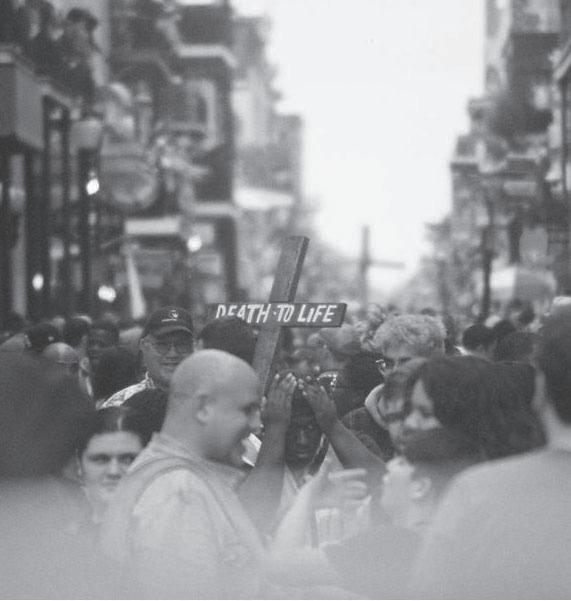
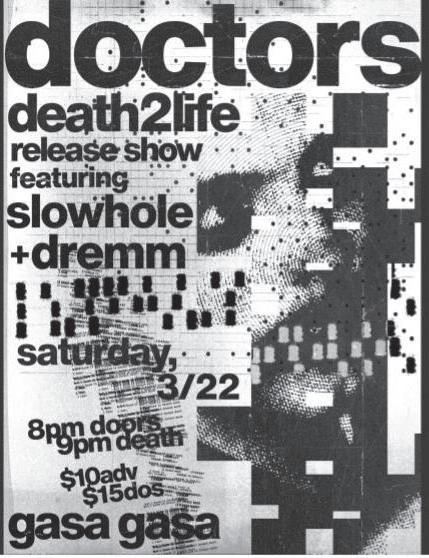

Maggie Lewis
Philosophy Major mblewis@my.loyno.edu
Whether blasting in the honky-tonk or the club, Chappell Roan’s newest single “ e Giver,” undeniably gets the job done. e single, released on March 13, 2025, o ers a modern sapphic twist on country love songs - a reinvention desperately needed in the country music industry. Roan, known for her amboyant air in music and style, seamlessly crosses between genres in this new era of pop-country sound. With “ e Giver,” Roan o ers a nostalgic nod to early 2000s country music while incorporating a refreshing lyrical outlook on wornout heteronormative narratives.
Since her performance on Saturday Night Live in early November when she teased the new single, fans have been anxiously waiting to hear the full version. Roan understood the anticipation and put out promotions for the release immediately. She began hinting at the song through social media posts and then took

to posting billboards across the country. Roan appeared on these roadside advertisements in both rural and urban areas dressed as various career women with the hotline number 620-HOT-TO-GO. When called, the number connects you to one of ve services including a lawyer, dentist, plumber, construction worker, or private investigator. e characters mirror the roles of the o cial lyric video released for the song this week, furthering Roan’s ability to transport listeners into a completely thematic universe. While Roan’s radio hits thus far have been mainly fem-pop anthems, the sound of this newest release adds a
dash of country twang to her repertoire. e backing pop melody of the song is merged with gritty wails of the ddle that irt with a folk-rock edge. Roan’s iconic, lively, and theatrical voice o ers some warmth to the pop-country genre. Her sound echoes that of early 2000s country powerhouses such as e Chicks, Shania Twain, and Gretchen Wilson. Rather than merely copying these sounds, Roan expertly infuses them into “ e Giver” with contemporary lyrical twists highlighting a sapphic love story in a country dive bar.
In a genre dominated by heteronormative tropes, Roan follows in the foot-
steps of previous trailblazers. With this newest release, though, she is emerging and forging her own path - one that is defying expectations of sound and story.
“ e Giver” injects a snarky tone to the traditional country song cliche of ‘guy picks up girl in a bar with a cute pickup line, the guy buys the girl a drink, insert obligatory wailing bridge, they drive home together in his truck.’ Instead, Roan ips the script with a female lead who doesn’t just show up to the bar - she takes it over, proving she does not need a map to nish the job.
Even without antlers on her wall or a supersized mega truck with an “impres-
sive” deafening mu er, Roan makes it obvious that delivering a better night than any man in town isn’t just her goal - it’s her second nature. Roan cheekily points out that she is not a country boy quitter, nor is she interested in hunting women for sport. Instead, the song focuses less on pursuit and more on exposure. It holds up a mirror to the shortcomings of men and serves the men of the country music industry a much-needed slice of humble pie. “ e Giver” is more than a catchy tune; the song aims to empower women to challenge male-dominated dating scenes and ip the traditional narrative on its head.
When you need a job done right, call someone who knows what they’re doing. And Chappell Roan? She knew exactly what she was doing when making and releasing “ e Giver.” Her motive for the single was clear, make a fun queer cowboy song. She did just that. rough rhinestone cowgirl storytelling and sounds from the early 2000s nostalgia, Roan Roan brings a humorous, irtatious, and rebellious spirit to the country music scene. With her masterful ability to span genres and fearless approach to creative storytelling, Roan delivered a pop-country record that speaks to a remarkably diverse audience.
is new release brings hope for a new album from Roan, perhaps one that breaks more boundaries of genre and releases her Midwestern roots that incorporate more nostalgic country tunes. In releasing “ e Giver,” Roan did not merely ride into the country music scene; she saddled up, took the reins, and led the whole genre on a whirlwind ride of sapphic sparkle and air.




By Eliose Pickering and Callie Honeycutt
Continued from front violence and the justice system,” she said.
Louisiana o cials maintain that the method is painless and say it is past time for the state to deliver justice promised to victims’ families after a decade and a half hiatus of executions. Attorney General Liz Murrill said she expects at least
four people on Louisiana’s death row to be executed this year.
“At the rally, I prayed not only for Jessie Ho man but also for the victims of violence and their families, who bear wounds that only God’s grace can heal,”
Prejean said. “ eir pain is real, and justice is necessary.”
In an attempt to appeal his death sentence, Ho man’s lawyers said that using nitrogen gas is unconstitutional, violating the Eighth Amendment’s prohibition
on cruel and unusual punishment.
“Catholics say they're pro-life, but what they mean by pro-life is pro-innocent life. And when you're walking with a human being to execution, they're rendered completely defenseless, and we deliberately kill them,” Prejean said. “Where's the dignity in that kind of death?”
e Associated Press contributed to this report.
By Ecoi Lewis ealewis@my.loyno.edu
With nearly 105 million people spending an average of seven hours in front of screens in America alone, a recent survey shows that it takes a toll on our health, according to AP News.
40% screen fatigue, also known as computer vision syndrome, is when the muscles around and in your eyes become worn out from prolonged exposure to screens, according to Partner Stack.
ere are seven symptoms of screen fatigue: double vision, struggling to see, bloodshot eyes, uncontrollable itching, sore neck, spine pain, and severe headaches according to littlethings.com. is a ects everyone, regardless of whether you wear contact lenses or glasses.
“ at muscle’s not supposed to stay tight all day long. And if it does, it’s like picking up a lightweight and trying to hold it over your head for hours,” said American Optometric Association President Steven Reed (courtesy of APnews).
is can disrupt your sleep and mental health. It can lead to issues like sleep deprivation, memory issues, insomnia, depression, and anxiety.
Below are the ways to reduce the problems.
• 20-20-20 rule- take a break every 20 minutes & focus on something that’s 20 ft. away for 20 seconds.
• Change your desk setup
• Install proper lighting
• Limit unnecessary screen timeset alarms on your phone to cut down on screen time.
• Minimize blue light with screen fatigue glasses
• Have regular eye checkups
• Look for other ways to spend your free time: go outside, read books, cook, rock-climbing, things of that nature.
• Take regular screen breaks throughout the day.
• Get o your phone 1-2 hrs. before bed
• Put your phone on dark mode/


By Maleigh Crespo
Continued from p.4
eye comfort shield to reduce bright lighting
• Have proper ergonomics: have the screen 4-5 inches away below eye level, get a padded chair that conforms to your body and holds wrists above the keyboard.
Schott said the Environmental Protection Agency and the state have laws and regulations that apply to any type of source of emissions, which are required to consider public health and welfare standards.
“Any industrial facility, or any human made structure, will have some impact on a surrounding community,” Schott said. “Air, water, noise, and light pollution are all relevant considerations in siting any facility.”
e EPA and the state will require facilities to apply the latest technologies to prevent impacts on health and welfare, and the operating permits require monitoring, reporting, and compliance audits, he said.
Even with the proposed improvements the facility would provide, Oblena believes there are still many harmful implications of disrupting the Orange Grove Plantation.
“ roughout all of the literature on cemetery sacredness and history, there is this emphasis on the importance of
burial grounds as a ritual for human life and how it comes to an end,” Oblena said. “In the National Register of Historic Places Bulletin on Cemeteries, burial grounds have an ‘inviolate nature.’”
Oblena said the long-term goal of RISE St. James is for the Orange Grove Plantation to be recognized as a National Historic Landmark or listed on the National Register of Historic Places, but for now, they’re attempting to register it as a historic cemetery with expected deadlines for May.
To continue to help protect the sanctity of other vulnerable places, the organization is establishing the St. James Historic Preservation Committee, which consists of historians, archaeologists, and concerned community members. e organization will not only determine the next steps of preserving burial grounds but also tell the stories of the people buried there.
“ e system and relationship of power is the same; the circumstances are just di erent,” Oblena said. “ e fact that people who lived, labored, and died as human property are being disrespected in
burial is appalling.”

By Christopher Pouncy ccpouncey@my.loyno.edu
The Loyola track and field head coach
Geoff Masanet said that success in this sport is a marathon, not a sprint. With a program that emphasizes outdoor competition, the team’s first indoor meet of the season was less about results and more about shaking off the rust.
“Track and field is such a diverse sport,” Masanet said. “You’ve got sprints, jumps, throws, hurdles, and distance events, and everyone’s on their own path to improvement. Since we don’t do a lot of indoor competition, this meet was more of a rust-buster—just a chance for our athletes to get out there, compete, and see where they’re at.”
While some Wolf Pack athletes turned
in strong performances, Masanet and his coaching staff said others used the meet to identify areas for growth. During their indoor season, the Wolf Pack placed fourth in the Southern States Athletic Conference Championship on Feb. 14.
Building upon this, Masanet said the ultimate goal, he emphasized, is working toward peak performances at the conference championship in April.
While preparing for their indoor season, Masanet said that one of the biggest hurdles for Loyola’s track and field team isn’t on the track—it’s finding one. Without an indoor training facility, the team navigated unpredictable weather and long travel distances to compete in indoor meets.
“We just don’t have the facilities for indoor track in this part of the country,”
Masanet explained. “If we want to compete indoors, we have to travel several hours, and that’s tough to do during the season. When bad weather hits, we don’t have an indoor space to fall back on, so we have to get creative with training.”
Despite these challenges, the team made the most of its resources. The coaching staff tailored training plans to help each athlete refine their technique, improve fitness, and prepare for the outdoor season, where the stakes are highest.
The fifth-year head coach mentioned that early season meets are crucial indicators of what’s possible for his athletes.
“These meets give us a sense of everyone’s ceiling for the season,” he said. “If they’re showing good fitness and solid technique early, that’s a great sign for
what they’ll be capable of later.”
Unlike team sports that adjust game plans based on opponents, track and field athletes focus on individual execution. Each sprinter, thrower, jumper, and distance runner follows a specific training regimen designed to maximize performance. Consistency, attention to detail, and maintaining good habits outside of practice—nutrition, sleep, and academics—are all critical to success.
“We don’t worry about what other teams are doing,” Masanet said. “We focus on improving every day, making sure our athletes are in the best possible position when it matters most.”
Masanet took the reins at Loyola in 2020, bringing with him more than 25 years of collegiate coaching experience at the Division I, Division III, and Nation-
al Association Intercollegiate Athletics levels. The move to New Orleans was both a professional and personal decision.
“My family and I wanted to relocate to a warmer climate, and the opportunity to build something here at Loyola really excited me,” he said. “I love helping athletes set goals and achieve them, and we’re working to create a strong team culture that pushes everyone to be their best.”
With months of training and preparation ahead, the Wolf Pack is focused on one thing: peaking when it matters most. For Masanet, the real competition lies ahead as Loyola’s track and field team continues its journey toward the outdoor season, which begins at the Belhaven Invitational on March 22.

Olivia Sanyal Sociology Major ossanyal@my.loyno.edu
Showering is one of the most important parts of my daily routine. I live on campus in Biever Hall, so I use the communal bathrooms everyday. After a day of four classes or so and walking around campus, I usually jump into the shower and rinse o immediately. I take my hair wash showers every other day,
so there is always some sort of shower in my day-to-day routine. I'm sure it was Wednesday, February 26, when I went into the showers and realized “Huh, the water isn't getting warmer,” I just thought the hot water was out. As I was already in the shower, I endured the freezing one-minute shower and jumped out as fast as I could once I was done. When I went back to the dorm, my roommate was getting ready to shower as well, resulting in me breaking the news that the hot water was out. We both let out a sad and frustrating sigh that day.
I will say, the cold water did leave my skin feeling refreshed, but I did feel like I was doing the ice bucket challenge all over again. Two days later, I had to wash my hair, and it was not a fun experience. I usually can just hop in and out, but I had to endure the cold for longer than I liked so my hair wasn't a greasy mess. After the Mardi Gras break and the communal freezing showers, I went to Florida with my roommate and some friends so we had access to hot water. Sadly, not everyone had the same opportunity to leave
campus as I did. ere was access to either the Tulane or Xavier showers, but the feeling of not being able to shower at your own campus in your own shower is frustrating.
Hot water is a very important part of everyone's daily routine. You need it for everyday activities like cooking, cleaning, bathing, etc... As most of us know, hot water kills bacteria, so not having access to it can be a concerning and potential health hazard. Having the hot water out for a day or two would've been frustrating but bearable. Sadly, it has been almost three weeks of spotty water temperatures. Being able to feel clean and healthy is super important, especially as a college student being away from home and being in a dorm where it's easier to get sick, surrounded by a lot of peers and students. I know from my experience of living in the dorms I have been sick many times already, but luckily I had hot showers during that time. For kids that are under the weather now, being sick and showering in cold water will only cause them to get worse.

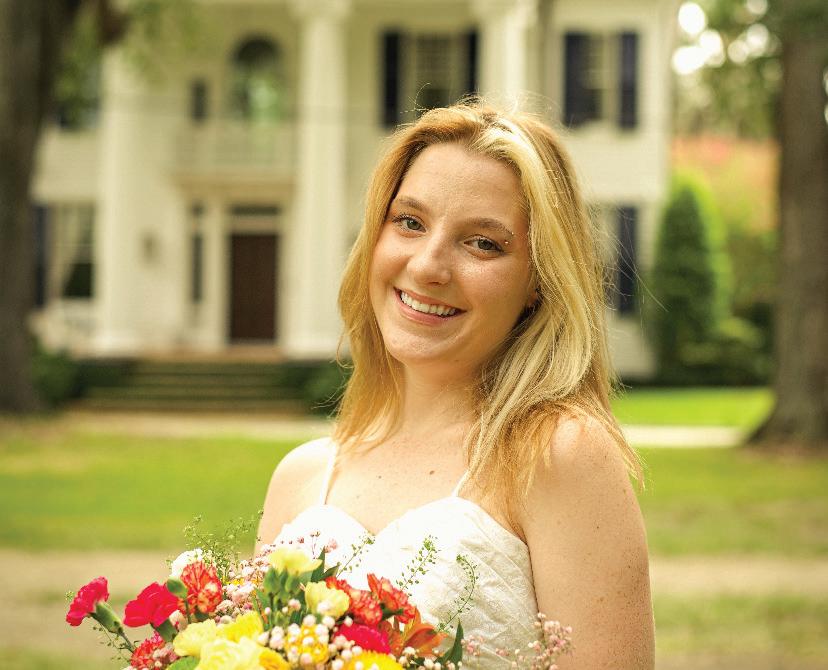
Eleanor Boucher-Ferry Journalism Major eabouche@my.loyno.edu
My social media this Mardi Gras season was swamped with complaints. Many videos on TikTok complained about the lack of throws this season, which made my “For You” page very disappointing. is year, I went to more parades, and for the majority of the parades, I was not concerned with throws. One of my friends caught three Muses shoes, and I caught many little bags of squishy animals in di erent colors, as well as a wizard hat and a well-designed chalice.
Growing up with Mardi Gras, it was implemented in my brain from early on that you have to work hard for the throws you catch. e more jumping
around and screaming I did, the more throws I got. is continues to be the way Mardi Gras works for me, and in my early adulthood I will scream at the top of my lungs for a strand of glass beads. How many throws I receive at a parade almost always coincides with how energetic and into the parade I am. e Krewe of King Arthur, my favorite parade, threw many items that excited me, such as princess hats, chalices, glass beads, swords, and snacks. I feel we set expectations for what we’re going to receive, but these expectations, in my opinion, must be proportional to the effort we put into it.
is year, I went to Krewe de Vieux with my boyfriend. We were in the front row, eager to catch. e parade was short, but I managed to catch a wide variety of interesting throws that ranged from stickers and beads to raunchy temporary tattoos. A lover of Krewe de Vieux, I was dancing and making conversation with the walking krewes, which earned me throws. My boyfriend was standing behind me for most of it, had his voice at an indoor level, and did not make an effort to stand out in the crowd of screaming people, their hands grasping eagerly for trinkets. As the walking krewes trickled down the route, he began to get increasingly agitated with his loot.

As of March 16, after the hot water was ‘ xed’, the hot water and heating went out again, resulting in Loyola setting up portable shower trailers by the University's Sports Complex. I'm honestly wondering, is this going to be a weekly thing? Will the heat and hot water be going in and out for the rest of the year?
Do I really want to walk outside my dorm with my shower robe and caddy? Not so much. Showering next to our parking garage isn't ideal, but at least it's an option available to us as this problem is being xed (again). I will say overall, this has been a frustrating experience thinking that this would only happen to us once, just for it to happen again days later.

Immigration
“I’m not catching anything!” he whined. After a few minutes of explaining to him the tried and true Mardi Gras strategy (loud and proud), he put his heart into the parade and received more throws. In my experience, I’ve had a lot of success this way, and the only times I haven’t caught as much was when I wasn’t giving Mardi Gras my all. Muses is a rough one for me. I’ve never gotten a shoe (their signature throw), and in the two times I’ve been to Muses I’ve left with only a few, sad, strings of beads. at being said, both times I’ve been to Muses I was exhausted, and I wasn’t very excited. I can’t be sad over my little beads, because they’re simply a consequence of my inability to fully participate. As the saying goes, Mardi Gras is a marathon, not a sprint. is analogy works well for explaining alleged stingy throws policy, as one cannot expect to complete a marathon without putting in the e ort necessary from start to end. In other words, if you leave a Mardi Gras parade unsatis ed with your loot, take a look at your level of participation and immersion, before blaming the people throwing for your misfortune.
Chapman University student Hailey Bunsold, 21, and a few hundred students take part in a walk out Monday, March 17, 2025, and protest against Trump's policies, including his executive orders to dismantle DEI. (Mindy Schauer/ e Orange County Register via AP)
Myles McWilliams English Major mcmcwill@my.loyno.edu
Trump’s recent actions involving diversity, equity, and inclusion initiatives will have lasting damage. is is mainly due to the obvious bias shown with his executive orders. In the order, he says the Biden administration “forced illegal and immoral discrimination programs going by the named diversity, equity and inclusion.” DEI programs promote equal and fair treatment, which Trump plans to take away. If Trump completely takes that away, we regress as a country.
" e revoking of DEl initiatives allows for employers to expand their hiring to be more inclusive, regardless of gender, sexuality, or skin color,” according to the White House website.
Here, Trump is claiming that DEI is discriminatory when he is allowing the opposite to happen. He is allowing for discriminatory practices to become legal. One such example is “the federal government would only recognize two sexes, male and female”, which would e ectively exclude transgender students and their rights, with there being dozens
more arrests by the U.S Immigration and Customs Enforcement in schools.
e federal government has also sought to freeze certain federal funds for schools. e implications of this could be no textbooks or improved cafeteria food and nothing but dated equipment and school gear for students. is is one example and implication of nancial discrimination, which is illegal.
e reason he's doing this is because, as stated on the White House website, DEI programs are “illegal and immoral discrimination programs.” He believes that he's restoring equality by removing DEI when he is not. He believes that the policies are “particularly racist against white candidates and workers,” when in fact, they are not.
e government also says “DEI implies that candidates and leaders are promoted because of their identity rather than merit,” and that they believe in turning America back into a meritocracy. e repercussions is that it will be damaging to women of color with their own dreams and aspirations by giving preferential treatment to white candidates or workers on the basis of equality.
Community support is a critical component of social justice. And as a school that’s dedicated to social justice, we must recognize when there are local issues that affect us in one way or another. One of the most important recent issues that affects our community is the planned industrialization of the residential Lower 9th Ward neighborhood, one of New Orleans’ most historic neighborhoods. There is a plan to replace the decrepit Alabo Street Wharf with a new planned industrial grain terminal and replace old train tracks that are no longer in use due to the fact that it is now a residential neighborhood.
The fact that the Port of New Orleans and Sunrise Foods International paints this as an economic opportunity simply because it is getting rid of the abandoned Alabo Street Wharf is an insult to the people whose lives will be affected as they watch as their neighborhood quickly turns into a place of harmful industry. Grain dust, dangerous railroad crossings, and the real risk of possible grain combustion are threats that residents take seriously, and as a community we should as well.
This is why stopthegraintrain.com and stopthegraintrain on Instagram are incredibly important for students and
community members to support at this time. Whether it’s posting, reposting, donating, or attending events and rallies, it is important to give some kind of support to this organization.
Our communities and our neighborhoods, especially the Lower 9th Ward, have been disregarded and tossed aside time and time again by the local and federal governments, and especially private corporations. Yet despite all these issues,
“ We have an opportunity to support a cause, and repay the city that has supported us as a school community many times.”
the strength of this community,which is emblematic of the strength of our New Orleans community as a whole,shines through. Now we have an opportunity to support a cause, and support New Orleans as a whole, and repay the city that has supported us as a school community many times.
Stopping the grain train is imperative especially as safety regulations continue to be disregarded by officials, and further federal deregulation leads to more and more industrial incidents that tear our communities apart.
While the decision of what to do with the Alabo Street Wharf is important, leaving it up to private corporations and the Port of New Orleans, which is not beholden to the city of New Orleans but a self-sustaining tax free entity, is an insult to the residents in the community. It was not a decision made by the community, with any kind of neighborhood or community support or input, and the community’s answer is clear: stop the grain train.
Editorial Board
Editor in Chief
Matthew Richards
Managing Editor
Eloise Pickering
News Director
Violet Bucaro
Campus News Editor
Alana Frank
Local News Editor
Mary Ella Hastings
Worldview Editor
Ecoi Lewis
Life & Times Editor
Emma Iseman
Opinion Editor Callie Honeycutt
Reviews Editor
Elise Beck
Digital Content Director Francisco Esteves
Photo Director Heidi Herrera-Wanke

HOWL to Jazzy & French Frye
GROWL to no AC
HOWL to ROTC
GROWL to fire alarms
HOWL to Gasa Gasa reopening
GROWL to still no hot water
HOWL to new Provost
GROWL to stress
HOWL to March Madness
The editorial on this page represents the majority opinions of The Maroon’s editorial board and does not necessarily reflect the opinions of Loyola University. Letters and columns reflect the opinions of the authors and not necessarily those of The Maroon’s editorial board.
The Maroon does not represent the opinion of administration, staff and/or faculty members of Loyola.
Letters are subject to editing for length, grammar and style. Please limit submissions to 400 words. Submissions are due no later than 4 p.m. the Sunday before publication.
Please send all submissions —
The Maroon, 6363 St. Charles Ave., Box 64, New Orleans, LA 70118. Email us your letters — letter@ loyno.edu.
Submissions may also be made online at www.loyolamaroon.com.
























































































































































































